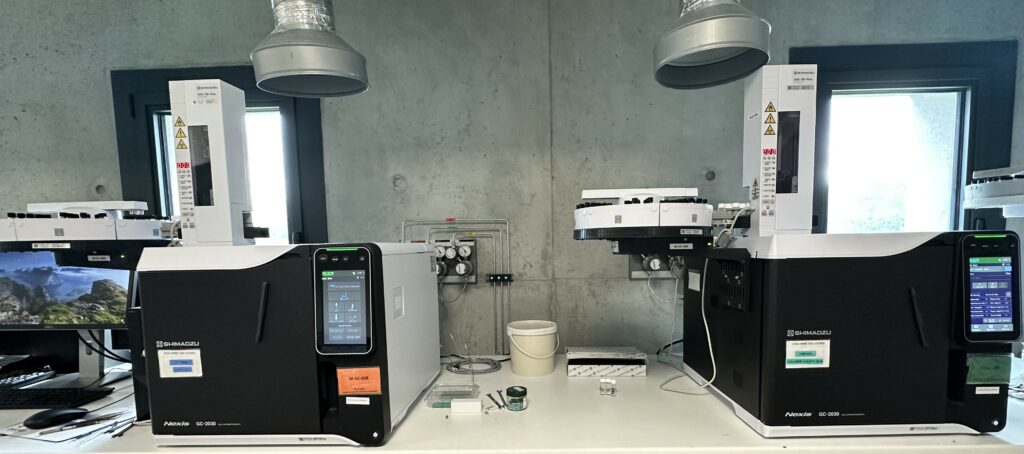A bit of context
PFAS (per- and polyfluoroalkyl substances) are not limited to wastewater or contaminated soils. They are also present in air and gases, particularly in landfill gas.
PFAS do not disappear during waste degradation. Highly stable, they circulate and migrate into the ambient air and even into biogas.
Striking figures
According to the scientific journal (Tolaymat et al., PMC), it is estimated that:
- 7.5 tons per year of PFAS are present in household waste.
- Nearly 460 kg per year could be released in gaseous form from landfill sites.
These figures highlight an airborne contamination pathway that remains largely underestimated.
What we know about anaerobic digestion recent data (2024–2025) confirm the presence of PFAS in:
- input sludge,
- digestates,
- and sometimes in the biogas itself.
Several publications from the American Chemical Society confirm the detection of volatile PFAS in landfill gases, sometimes at levels well above expectations.
Mass balance studies indicate that hundreds of kilograms of PFAS could be released each year through gaseous emissions at the national scale
Incomplete data
Current research remains limited: few sites have been studied, and most focus on the best-known PFAS compounds.
Sampling and analytical methodologies vary greatly from resin cartridges to canisters as do analytical instruments, ranging from LC-MS/MS to GC-MS, making inter-study comparisons difficult.
Observed concentrations also depend heavily on waste composition, containment level, and the quality of biogas collection.

What is already known about PFAS in biogas
In anaerobic digestion (AD) units, recent studies (2024–2025) show the recurrent presence of PFAS in sludge, digestates, and condensates.
Some treatments (thermal hydrolysis, activated carbon, electrochemical processes) achieve partial reduction of certain analytes, but complete elimination remains out of reach.
Accumulations have even been observed in digestates, raising concerns about their agricultural reuse.
Impacts for biogas operators and analytical laboratories
For biogas plant operators
These findings are far from trivial.
- They raise environmental and regulatory risks, particularly when digestates are applied as agricultural amendments.
- High PFAS concentrations can also affect the biological performance of digesters or even inhibit biogas production.
For analytical laboratories
Monitoring must now include an expanded range of compounds:
- classic ionic PFAS (PFOA, PFOS, PFHxA, etc.),
- and neutral and volatile PFAS (fluorotelomer alcohols).
How to sample the gas phase?
The most recent studies recommend canister-type sampling, followed by GC-MS/MS analysis.
How to sample the gas phase?
The most recent studies recommend canister-type sampling followed by GC-MS/MS analysis.
In conclusion
An emission pathway that can no longer be ignored
PFAS in biogas represent a new and underestimated environmental challenge.
Between atmospheric emissions, digestate contamination and process performance impacts, their monitoring is now essential to ensure environmental safety and regulatory compliance.
Recent studies pave the way for a better understanding of the PFAS cycle and for the development of robust analytical protocols, a key step toward sustainably reducing their footprint in the biogas and waste management sectors.
